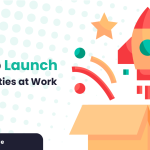
As you know, our team loves to share articles that resonate with us, and align with the MixR values and mission. In the latest edition of our “Article Spotlight” series - see previous editions here and here - we’re highlighting a piece by Mark Mortensen and Heidi K. Gardner in Harvard Business Review entitled “WFH Is Corroding Our Trust in Each Other.”
The sudden transition to remote/hybrid work in early 2020 came as a shock for most people and organizations. Over the past year, Mortensen and Gardner have researched dozens of companies across various industries that are wrestling with this challenge. Their conclusion? Organizations initially experienced a positive sentiment related to WFH, but are now moving towards a worrisome recognition that trust is fundamentally at risk in the workplace - leading to lower morale, lesser productivity and decreased innovation.
At MixR, we believe trust is the key to long-term, sustainable outcomes for your people and bottom line. As amplified throughout the article, “once trust is lost, it is very hard to regain.” Organizations that fail to address the trust issue - working to rebuild and maintain trustworthy relationships among their employees - are clearly at risk.
The solution? The authors make it clear that it does not lie in more monitoring. In fact, research shows that 49% of employees subject to stringent monitoring reported severe anxiety, compared to only 7% of those subject to low levels. It is proven that having genuine and lasting connections at work goes a long way in creating a positive employee experience. With WFH, leaders must go the extra mile to ensure that trust is being built throughout their organization. Here are a few ways to do so.
Informal & low risk connection
Lack of in-person contact means fewer sidebar conversations, and opportunities to interact with colleagues on an informal basis. These types of interactions go a long way in promoting competence trust & interpersonal trust - two distinct kinds of trust introduced in the article that are essential for people to successfully work together. Low-risk situations such as a lunch & learn series or remote team building activities are a great way for people to connect and build trust in one another.
Reciprocity is key
Trust is often discussed in terms of “building trust” amongst others. However, trust is a two-way street. In order to increase trust, it is crucial to showcase your own trustworthiness - as noted in the article, “the more trust they place in you, the less likely they will be to betray your trust.” This means communicating openly and honestly. Keep your teams up to date on things that are changing, but also things that are not - reinforcing some level of normalcy reduces uncertainty and creates a sense of stability.
Trust is not created equally
There are two types of trusters outlined in the article: automatic and evidence-based trusters. The former initially trusts another person, until something happens to break that trust - leading with the benefit of the doubt. The ladder approaches new relationships with distrust and minimizes their risk exposure until the other person has proven their trustworthiness. It is crucial for leaders to keep this framework in mind and get to know your people in order to choose the best approach to trust building.
To dive deeper into these solutions, and to discover specifics on why WFH is corroding our trust, we highly encourage you to read the entire Harvard Business Review piece. We’ll also leave you with a final piece of information that makes the business case for high-trust work environments: our latest infographic.
We hope you enjoyed this edition of our “Article Spotlight” series. Stay tuned in the coming weeks for more insights from across our team. In the meantime, if you’re an organization looking to scale trust and belonging at work, feel free to connect with us.







